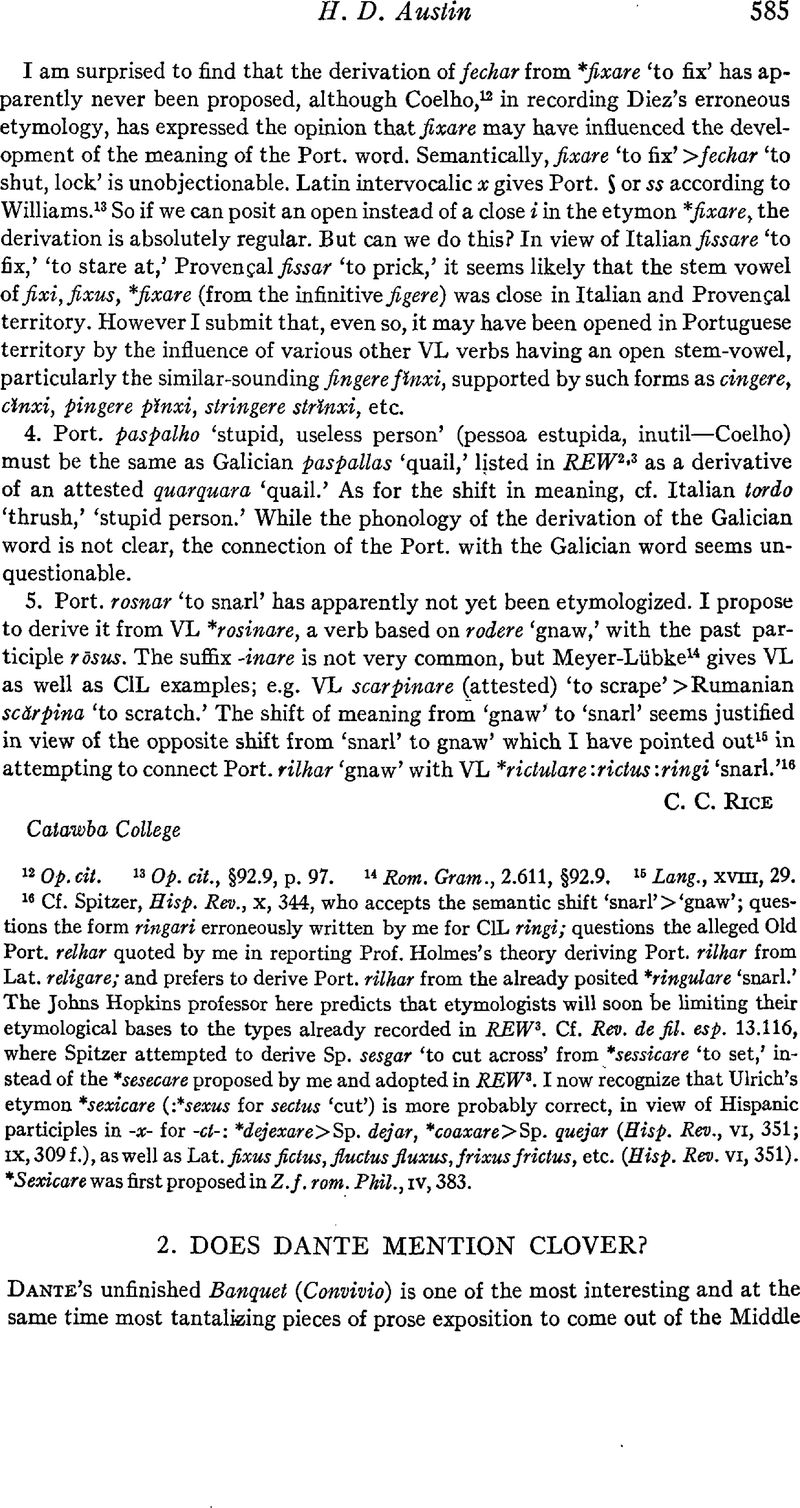No CrossRef data available.
Article contents
Does Dante Mention Clover?
Published online by Cambridge University Press: 02 December 2020
Abstract

- Type
- Comment and Criticism
- Information
- Copyright
- Copyright © Modern Language Association of America, 1946
References
1 To date, nothing of that projected series has appeared except Michele Barbi's magnificent edition of the Vita Nuova (Florence, 1932).—The history of the various editions of the Convivio is outlined by M. Barbi in his Introduzione to the Busnelli-Vandelli edition, pp. lviii-lxviii.
2 Two volumes, Florence, 1934.
3 “Tranne qualcuno coltivato per foraggio, i vari trifogli sono erbe selvagge e impaccianti ilterreno.”
4 This form tra- of the prefix is found in the Engadine traföl'.
5 Fourth printing, Florence, 1738.
6 “Di trafoglio, Seminato, o Pieno di trafoglio.”
7 “Più che pieno di foglie. Foliatus e Foliosus, in Plin.—Dant. Conv. 157.”—Scartazzini repeats this definition in his Enciclopedia dantesca.
8 P. 183: “trifoglioso; altri legge trafoglioso, ma non trovo registrati altri esempi nè dell'uno nè dell'altro vocabolo; comunque dal contesto si intende chiaramente che deve interqretarsi: pieno di male erbe, di erbe salvatiche.”
9 W. W. Jackson, Dante's Convivio translated into English (Oxford, 1909); p. 214.
10 P. H. Wickstead, in Temple Classics, 3rd ed. (London, 1912), p. 259.
11 Red, purple, or meadow clover.
12 “Dante e l'agricoltura del suo secolo,” Giorn. dant., vn (1899), p. 217.
13 See Pauly, Real-Encyclopädie der classischen Altertumswissenschaft, s.v. Klee.
14 N.B., xxi, 54 and 152.
15 Ibid., xxii, 55.
16 Ibid., xviii, 144 ff.
17 Etym., xvii, ix, 72.
18 Speculum naturale, ix, cxlviii and ci.
19 Georg., i, 215; R.R., v, i.
20 De Veg., vii, tract. i, cap. xii.
21 Loc. cit.
22 Enc. ital., s.v. Trifoglio.
23 The Tomm.-Bell. marks all of these except two with the dagger signifying ‘obsolete‘—tracocente being characterized as “non com.,” and tragrande as “poco usit.”
24 Unless we accept tramirabile for V.N., xiv, 5, following Witte's edition (2d ed., Leipzig, 1876); Tomm.-Bell. quotes this form, Crusca does not.


